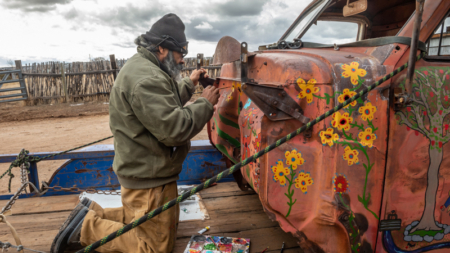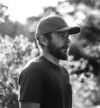El Rito Santero
Nicholas Herrera brings new life to old things on his ancestral homestead in El Rito, New Mexico.
“When I want a fancy car, I make it myself,” says Nicholas Herrera while woodcarving in a workshop on his ancestral homestead in El Rito, New Mexico. “Like my 1939 Chevy coupe, which I hauled out of an arroyo and completely rebuilt. That car is a mestizo like me, made up of all kinds of parts.” Herrera’s great-grandfather brought nothing with him when he settled on this land, so he had to find and shape building materials and tools, many of which Herrera still uses today. “The artists who first came to New Mexico hundreds of years ago had to use what they had, from things around here,” he says. “Using old wood, natural pigments, brushes made from their own hair, urine for binder—what they had available.”
A self-described modern-day santero, or saint maker, Herrera has built his life around honoring his ancestors and the future of his people by creating carvings, statues and paintings from objects he finds on his homestead. His work, which has appeared in museums around the world, including the Smithsonian American Art Museum, expresses his mixed Indigenous and Spanish Catholic roots and takes on issues ranging from police brutality to domestic abuse to addiction and the climate crisis. When he’s not working in his studio or keeping his property up to snuff, Herrera gives back to his community by helping at-risk teens find their artistic paths.
He graciously took some time to talk about his work, art and roots—and how each informs the other.
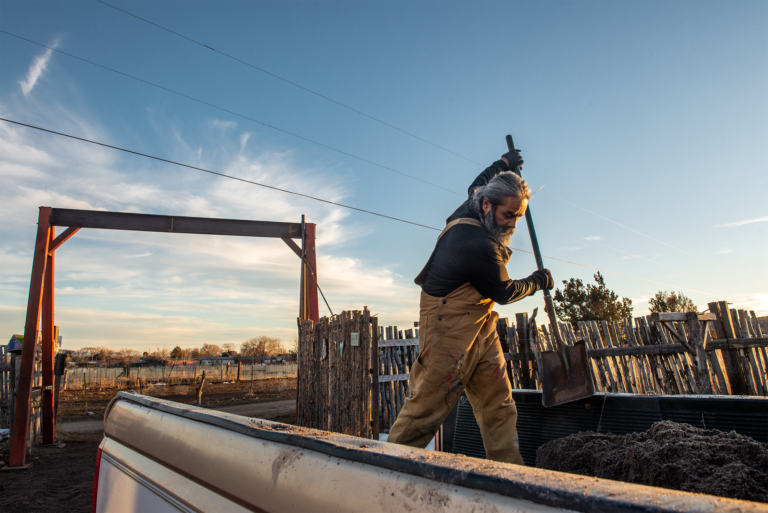
Photo: Beth Wald
“Things are always breaking or wearing out around the farm, and I don’t always know how to fix them. But I figure it out. Here in the sierra, you have to be a jack-of-all-trades; you can’t just have someone come by and fix things all the time. Sometimes I am working on a fence or a post and I find something that I can turn into an art piece—like metal scraps, old car parts, a piece of driftwood or an old horseshoe—something I wasn’t expecting.”
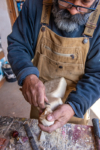
Photo: Beth Wald
“I had a great-uncle who was a famous woodcarver in the late 1800s, and I saw his work. I started doing some woodcarving when I was about 12 years old, but for many years, I never knew I was going to be an artist. Some people want that from the beginning and are able to go to art school, but that wasn’t me. I did lots of other jobs—construction, road crews, auto body. I went to welding school but couldn’t graduate since I am so dyslexic.
“When I was in my mid-20s, I was working a job that I didn’t like, and I decided that when I had paid off my land, I was going to quit that job and pursue my art full time. I really had to hustle, and there were lots of people who didn’t want anything to do with my work because it wasn’t traditional enough. But I persevered and started to be shown and collected.”

Photo: Beth Wald
“Being a modern day santero means that I use the old traditions but have modernized them with the tools we have now. I look at the past, and into the future, and figure out what I want to do with my art in the present. Like the work I did of the Three Kings. It’s a traditional theme, but I made it modern by putting them on motorcycles. Or like the piece I did of Saint Peter—I carved him and put him in a New Mexico jail.
“A lot of these saints were rebels, and many of them were very political, so I think their stories are still relevant. I see Saint Librada as the patron saint of battered women. She took a vow of chastity, but her father wanted to force her to marry a king. She refused because of her Christian faith and prayed for a solution. As a result, she grew a beard, and they crucified her for it. I have used her in my work as representative of what women go through in these times—domestic abuse, alcoholism, addiction—so these saints and stories can still talk to us, can teach us.
“I also really connect with the lowrider tradition of this area, which isn’t that much different from how back in the old days people would deck out their horses or their carriages to express their status, their individuality. So, I put a lot of the saints and Jesus in lowrider cars or on Harleys.”
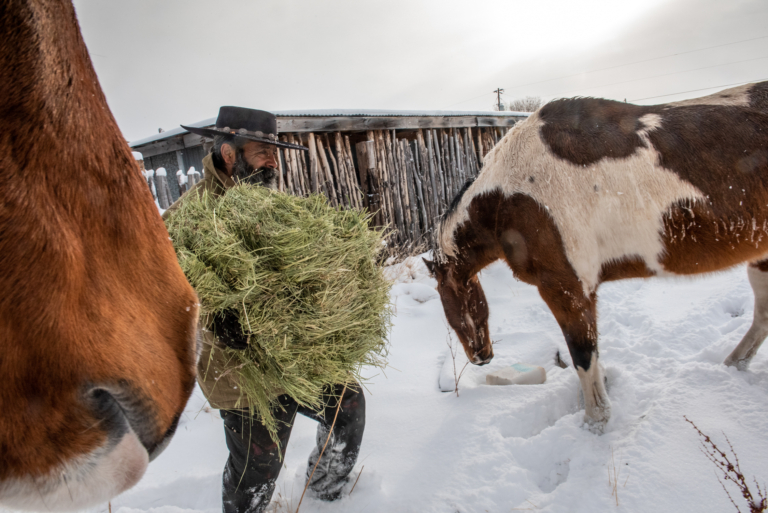
Photo: Beth Wald
“Things are not made to last anymore. Everything is disposable. Everyone wants too many things and then just throws them away in an arroyo and buys something new. I just recycle; I don’t like to see things go to waste. I want to keep the land here the way it was, to keep the farm intact and pass it on to my daughter. I don’t want to turn it into a bunch of condos or sell it. Land has become something to buy and sell, but I don’t feel that way. Money comes and goes but land doesn’t. So each day, I work the land, walk it or tend to the acequias (irrigation ditches). Water here also means survival—with no water, there is nada.
“I continue to live a simple life. I have my chickens, horses and dogs, and I keep away from the commercial world. In a way, I kind of live outside of time. My ancestors, the Great Spirit and what I see around me, even the suffering and pain of people, inspire me to express these things in my art. In the evenings I walk the dogs, bring wood in for the night, light the fire and relax. I sleep good at night.”
